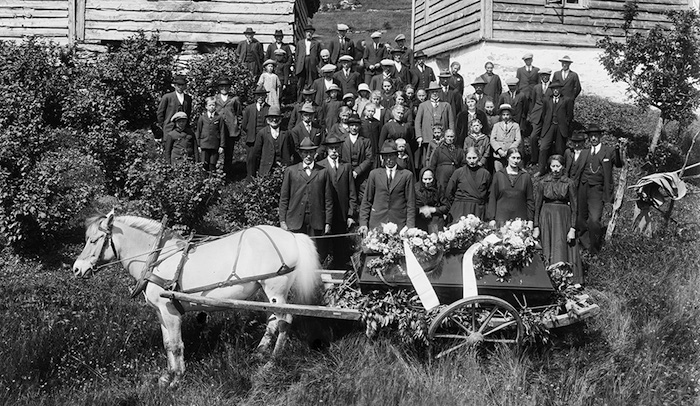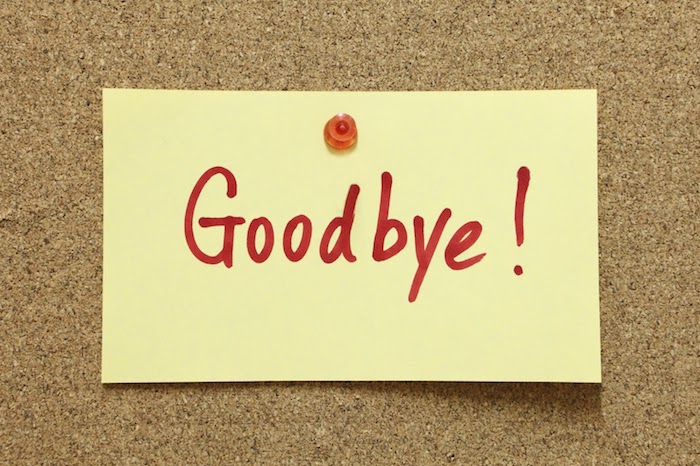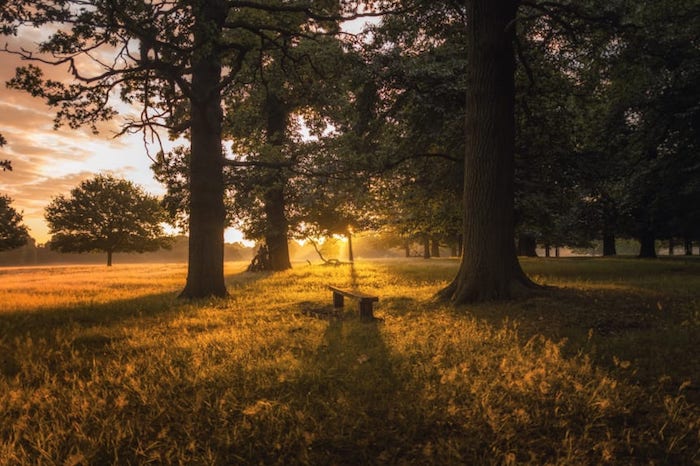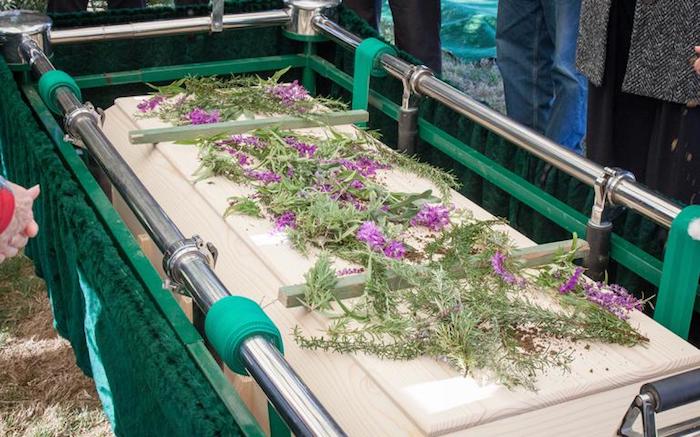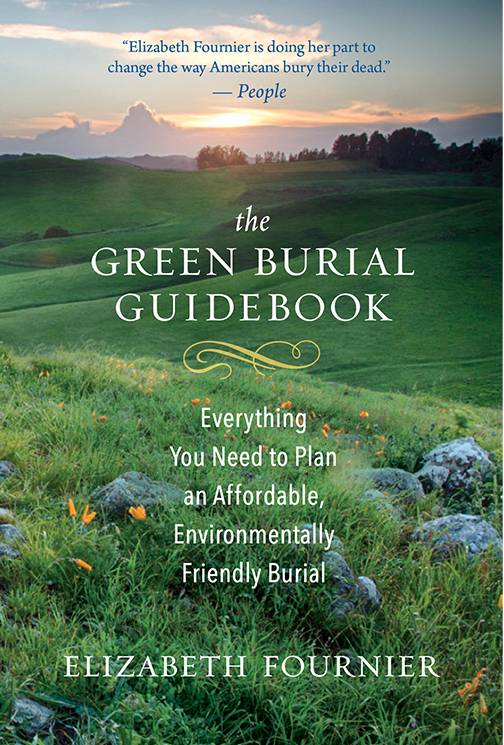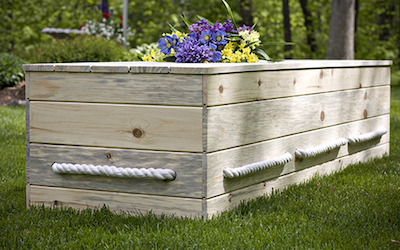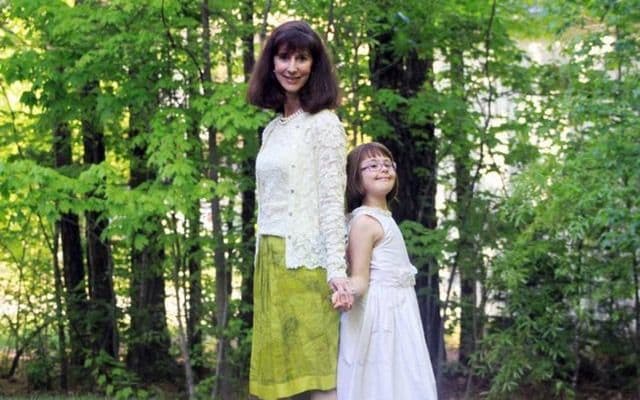
My friend Jacqueline Zinn was diagnosed with glioblastoma, a brain cancer, in 2013; she died 18 months later, at age 56, leaving behind a husband and four kids. Jacquie was a triathlete who knew a thing or two about endurance, and she managed her treatment — surgery, radiation and chemotherapy — with the same skill and organization she had brought to her work as a project manager for a drug company. Once she realized that she had only weeks to live, Jacquie began planning for the next chapter: her death and its aftermath.
And so “every night for weeks she wrote letters to our children,” her husband Doug recalled. Jacquie wrote multiple letters to each child, to be opened at different life milestones. Jacquie wanted to be “present with her kids,” he said, at each of those important moments
for what I jokingly call “The End” is not for faint hearts. War hero John McCain is said to have been disciplined and firm as he planned his funeral over the past year, including the singing of the Irish ballad “Danny Boy.” But few of us have that strength. Recently divorced, I needed to rewrite my will and my medical power of attorney as well as a host of other financial and medical documents. At almost every turn, I found myself crashing head-on into the wall of denial. Just last week, my attorney begged me to acknowledge that I was at least receiving her emails, even if I couldn’t respond to them. “Yes,” I replied, tersely. All this resistance, and I’m not suffering from any terminal condition.
That’s why Jacquie Zinn’s letters to her children seem heroic to me. After all, she did have a terminal diagnosis when she sat down to write what ended up being more than a dozen letters to her children, ranging in age from 11 to 21, and she knew her time was short. I first heard about the letters at her memorial service in 2013. This past spring, working on a book about death and dying, I reached out to her second-born son, Jerry, who was writing about the loss of his mother, to ask if he’d be willing to share his letters from her. He’d already gotten two — one soon after her death and one when he graduated from college — and after some hesitation, he said okay. Now 24, Jerry will get the final letter when he marries.
“The letters my mother left me are among the most precious gifts I possess,” he told me. “She diligently took the time, the very limited time, as her life was coming to an end to sit down and think about her children’s futures.”
So one day, in perfect cursive penmanship and blue ink after her oncologist told her she had only weeks left, Jacquie wrote her first letter to Jerry, then age 19, to be opened after she died. Here is a portion of it:
“Dear Jerry, my budding film-maker,
“I know you have a lot of emotions running through you, as I did when my father died, but I was much older than you at the time, so I really can’t begin to truly comprehend what you are feeling. I am so incredibly sorry that I had to die while you are so young and I assume it sucks for you. Perhaps you can use some of these emotions and feelings in your upcoming work(s), assuming you continue to pursue film.
“Let me assure you that I did absolutely everything I could to stay alive for as long as possible. I know you realize that having been with me at many of my treatments or tests. Plus the acupuncture, tons of praying I also did. But for some reason I just didn’t make it as one of the chosen ones to be cured. But because of what I did I’m sure I lived much longer than if I hadn’t been in good shape to begin with.
“I am incredibly proud of you for everything you have done in your relatively short life. I will be watching over you every day to see what new and exciting things you will accomplish — regardless of what occupations(s) you pursue over your lifetime.
“Do your best to support Dad and your siblings, especially during this first year as it will be the hardest for everyone. I remember that from when my father died. Time will certainly help, but it takes a long time to focus on the happy memories while the sad thoughts are more immediate and closer at hand.
“I had many fantastic years on earth, more than a lot of people, hence, I have no complaints. I survived a melanoma, car accident in the mountains of West Virginia with Uncle Jerry, car accident in Durham. So I have already lived many lives and I was extremely grateful for each and every moment. Try and live your life that way and you will be a happy and fulfilled human being.
“I love more than you will ever know, my dearest Jerry.
“Love, Mom.”
On the day Jerry graduated from the University of North Carolina at Chapel Hill in 2016, Doug handed over letter No. 2, written with the same pen, on the same type of note paper.
“My sweet dear Jerry,
“Well — this is it — a big milestone in your life — college graduation! Congratulations. I am so incredibly proud of you no matter what your major or minors. I know you made it worthwhile and got just exactly what you wanted to out of the experience. I know you learned an incredible amount about subjects and probably an even greater amount about people.”
Jerry said that at various times during college he had considered dropping out, but “knowing that I would never receive that letter if I did not graduate was a very strong influence in keeping me in school. The letter was a motivation for which I will be forever grateful.” Knowing Jacquie as I did, I’m certain that was part of her master plan.
In the second letter, Jacquie signs off with these words: “I am watching over you all the time, or at least I hope I can do that! Congratulations, again. Enjoy this fabulous day and all the celebrations around. Big Hugs and Kisses! Much Love, Mom.”
What a gift, an eternal gift, I thought as I read and reread the two letters. More than anything, I silently bowed in amazement, understanding how Jacquie had faced her own version of “The End.” Doug reminded me that she’d written her letters while in a wheelchair, paralyzed on one side.
With Jacquie’s example in mind, I finally sat down and read the pile of documents my lawyer had sent to me, realizing that my denial served no purpose. To my surprise, I found comfort in taking care of that necessary business — once done. I’d like to think that was something Jacquie felt, too, as she sent her missives into the future.
Complete Article ↪HERE↩!

